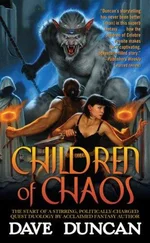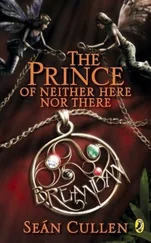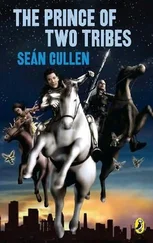____
Jeffco also faced a series of embarrassing leaks. Investigators had let the video get loose to CBS and had revealed the truth about Cassie Bernall; lead investigator Kate Battan had broken her silence and spoken to one reporter; and the first passages from Eric’s journal had slipped out. And yet the department maintained its official silence. It delayed the report again.
The victims’ families were furious. The sheriff’s department’s credibility plummeted. Its officers had done a thorough job of detective work on the case, but the public had no way to see that. Jeffco expressed shock and bewilderment at the leaks; officials offered flimsy excuses and assurances. A spokesman insisted that only two copies of Eric’s journal existed, when in fact it had been run through photocopiers repeatedly, and no one had a clue how many copies were floating around.
Then the undersheriff let a Time reporter watch the Basement Tapes. He had assured the families repeatedly they would be the first to see the videos.
The magazine ran an expose cover story shortly before Christmas. Stone and Undersheriff John Dunaway posed in their dress blues with white gloves, armed with the killers’ semiautomatics.
Many families were aghast. Several called for Stone to resign. Charges of cowardice against the SWAT teams resurfaced. Prominent law enforcement officials joined the chorus. Stone insisted that his department would be exonerated by the final report—which was delayed again.
____
Turbulence was expected that fall. Everyone knew they would face anniversaries and hearings. No one foresaw the string of aftershocks. The school was sued over a craft project gone awry—the Rohrboughs charged infringement of their religious expression. Brian Rohrbough repeated the crosses incident at a memorial garden created at Cassie’s church: his group picketed Sunday services and then chopped down two of the fifteen trees in front of the horrified youth group that had planted them. They inadvertently chose the tree symbolizing Cassie.
Bomb threats were a regular occurrence, but one gained traction in the wake of the Time story. The school was shut down until after Christmas. Finals were canceled. Legal battles over the Basement Tapes began.
“When will it end?” a local pastor asked. “Why us? What is happening in our community?”
The new year began, and it got worse. A young boy was found dead in a Dumpster a few blocks from Columbine High. On Valentine’s Day, two students were shot dead in a Subway shop two blocks from the school. The star of the basketball team committed suicide.
“Two weeks ago they found the kid in the Dumpster,” a friend of the Subway victims told reporters. “Now—I kind of want to move. This is worse than Columbine.” Students had grudgingly come to adopt their school’s name as the title of a tragedy.
Some events were unrelated to the massacre or even the school. But much of the community had lost the ability to distinguish. Perspective was impossible. A fight with your girlfriend, a car crash, a drought… it was all “Columbine.” It was a curse. Kids were calling it the Columbine Curse.
Appointments at the mental health facility set up for Columbine survivors rose sharply through the fall. “Many come in after they’ve tried everything they know how to do,” a psychologist on the team said. Utilization peaked about nine months after the tragedy and held steady until a year and a half out. At any given time during that period, case managers were following about fifteen kids on suicide watch. Gradually, each one came down from the brink, but another took that kid’s place. Substance abuse spiked. The area experienced a marked increase in traffic accidents and DUIs.
“By definition, PTSD is a triad of change for the worse, lasting at least a month, occurring anytime after a genuine trauma,” wrote PTSD pioneer Dr. Frank Ochberg. “The triad of disabling responses is: 1) recurring intrusive recollections; 2) emotional numbing and a constriction of life activity; and 3) a physiological shift in the fear threshold, affecting sleep, concentration, and sense of security.”
Response to PTSD varies dramatically. Some people feel too much, others too little. The over-feelers often suffer flashbacks. Nothing can drive away the terror. They awake each morning knowing it may be April 20 all over again. They can go hours, weeks, or months without an episode and then a trigger—often a sight, sound, or smell—will take them right back. It’s not like a bad memory of the event; it feels like it is the event. Others protect themselves by shutting down altogether. Pleasant feelings and joy get eliminated with the bad. They often describe feeling numb.
____
It was a rough year. The football team offered a respite. Matthew Kechter had been a sophomore when he was killed in the library. He had played JV on the defensive line in the 1998 season and had hoped to make varsity this fall. At his parents’ request the team dedicated the season to Matt. Each player wore Matt’s number on his helmet and Matt’s initials, MJK, on his cap. They finished the season 12-1. They came from 17 behind in the fourth quarter to win the first playoff game. The players wept on the field. They chanted MJK! MJK!
They were heavy underdogs for the state championship. Denver powerhouse Cherry Creek High had taken five of the last ten titles. Columbine had made it to the big game only once: a loss two decades back.
Supporters flew in from around the world. Eight thousand people packed the stadium. The media were everywhere. The New York Times covered the game. The temperature dropped below freezing. Patrick Ireland sat in the front row, trying to keep warm.
Cherry Creek went ahead early. Columbine tied it up at the half, and then their defense came on strong. They allowed just two first downs in the second half, and a third touchdown put it away. Columbine won 21-14. Fans rushed the field. The familiar chant thundered through the stands. We are… COL-um- BINE! We are… COL-um- BINE!
The school held a victory rally. A highlight reel of the game was projected, ending with a picture of Matt. “This one’s for you,” it said. A moment of silence was held for all thirteen.
____
Some kids seemed immune to the gloom. Others fought private battles on completely different chronologies. Patrick Ireland made steady improvements, kept his 4.0 average that fall, and made sure valedictorian was still in sight. But a more significant problem loomed.
Patrick had had his life pretty well figured out junior year. Before he got shot, he was going to be an architect. His grandfather had been a builder, and Patrick had taken to drawing in his junior high drafting class. He lined up that T-square against the drafting table and he could feel it. He liked the precision. He enjoyed the artistry. At Columbine, he worked with sophisticated computer-aided design software. While Eric and Dylan finalized their plot, Patrick was deep into research on college programs and had started investigating internships.
He was still going to be an architect. Patrick clung to the dream straight through outpatient therapy. He took breaks for three out-of-state campus visits, at schools with leading architecture programs. They all accepted him. But they stressed how rigorous the work would be. Architecture programs are known for their massive workloads: five years of relentless all-nighters. All night was not an option for Patrick. He could cheat himself out of a couple hours’ sleep, but his brain would take years to recover. He would slow his progress by taxing it too hard, and possibly even bring on seizures.
In March, he took a school trip to England. The jet lag was tough. Kathy went with him, and Friday night she noticed his face went blank and his eyeball fluttered for a few seconds. “Did you do that on purpose?” she asked.
Читать дальше







